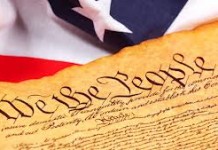Each American generation has its characteristic psychiatric diagnosis, and, typically, a drug or medication that represents the times, states Salon.com
“When the world was on the verge of blowing up in the Dr. Strangelove 1960s, we lived in the Age of Anxiety. Valium, the drug that symbolized that period, was celebrated in books and movies like “Valley of the Dolls” and songs like the Rolling Stones’ “Mother’s Little Helper.” The 1970s was the Age of Malaise, and the drug that attempted to mediate that malaise was cocaine. Starting in the Prozac-fueled late 1980s and 1990s, the omnipresent diagnosis was depression. Later, the diagnosis was attention deficit disorder and the representative drug was Adderall.
“If this is so, the appropriate diagnosis of the last decade — since Sept. 11, 2001, to be exact — may be PTSD: post-traumatic stress disorder. Of course legions of American soldiers have received the diagnosis, and enormous resources, appropriately, have gone into its treatment. The Department of Veterans Affairs estimates that nearly 30 percent of the more than 800,000 Iraq and Afghanistan War veterans treated in veterans’ hospitals and clinics are diagnosed with PTSD.
“But in the past 10 years, even non-veterans have been engaged in an ongoing narrative of American trauma. After 9/11 came Katrina, then the economic meltdown and the recession that never seems to end. This past year saw Sandy followed by Newtown. Along the way there’s been the mass killings at Virginia Tech, at Northern Illinois University, and in a Colorado movie theater. There also seems to be a deepening sense that one can never fully escape from potential catastrophe, not on a Boston street on a promising spring day or in a Connecticut elementary school a few weeks before Christmas.
“In the popular perception, the locus, both psychologically and geographically, of the tragedies has shifted. They’ve gone from being “out there” — in, say, the remote parts of the South or West, or the inner cities — to “right here,” in respectable, suburban America. The latest chapter is the bombing in Boston, with its indelible images — the 70-year-old runner laid out on the ground; the impossibly innocent smiling face of the 8-year-old boy who was killed. And it further cements post-traumatic stress in the popular psyche and lexicon in a similar way in which depression, bipolar disorder and ADD — and the drugs to treat them — were popularized in earlier eras. Continue reading “Traumatic times”
Continue reading “Traumatic times”


